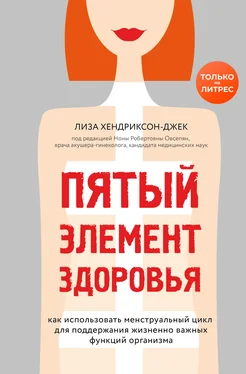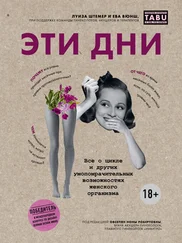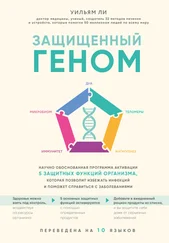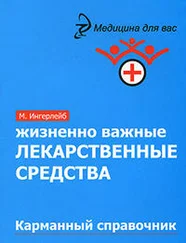28. Van Stuijvenberg, Martha E., Serina E. Schoeman, Carl J. Lombard, and Muhammad A. Dhansay. “Serum retinol in 1–6– year-old children from a low socio-economic South African community with a high intake of liver: implications for blanket vitamin A supplementation.” Public Health Nutrition 15, no. 4 (2012): 716–724; Strobel, Manuela, Jana Tinz, and Hans-Konrad Biesalski. “The importance of β-carotene as a source of vitamin A with special regard to pregnant and breastfeeding women.” European Journal of Nutrition 46, no. 9 (2007): 1.
29. Strobel, Manuela, Jana Tinz, and Hans-Konrad Biesalski. “The importance of β-carotene as a source of vitamin A with special regard to pregnant and breastfeeding women.” European Journal of Nutrition 46, no. 9 (2007): 2–3.
30. Mozaffarian, Dariush, and Eric B. Rimm. “Fish intake, contaminants, and human health: evaluating the risks and the benefits.” JAMA 296, no. 15 (2006): 1885–1899.
31. Hibbeln, Joseph R., John M. Davis, Colin Steer, Pauline Emmett, Imogen Rogers, Cathy Williams, and Jean Golding. “Maternal seafood consumption in pregnancy and neurodevelopmental outcomes in childhood (ALSPAC study): an observational cohort study.” The Lancet 369, no. 9561 (2007): 578–585.
32. Davidson, Philip W., Gary J. Myers, Christopher Cox, Catherine Axtell, Conrad Shamlaye, Jean Sloane-Reeves, Elsa Cernichiari et al. “Effects of prenatal and postnatal methylmercury exposure from fish consumption on neurodevelopment: outcomes at 66 months of age in the Seychelles Child Development Study.” JAMA 280, no. 8 (1998): 701–707.
33. Ralston, Nicholas V.C., Carla R. Ralston, J. Lloyd Blackwell, and Laura J. Raymond. “Dietary and tissue selenium in relation to methylmercury toxicity.” Neurotoxicology 29, no. 5 (2008): 802–811.
34. Mozaffarian, Dariush, and Eric B. Rimm. “Fish intake, contaminants, and human health: evaluating the risks and the benefits.” JAMA 296, no. 15 (2006): 1885–1899.
35. Scholl, Theresa O., and William G. Johnson. “Folic acid: influence on the outcome of pregnancy.” The American Journal of Clinical Nutrition 71, no. 5 (2000): 1295S–1303S; Gernand, Alison D., Kerry J. Schulze, Christine P. Stewart, Keith P. West Jr., and Parul Christian. “Micronutrient deficiencies in pregnancy worldwide: health effects and prevention.” Nature Reviews Endocrinology 12, no. 5 (2016): 274–289. Black, Maureen M. “Effects of vitamin B12 and folate deficiency on brain development in children.” Food and Nutrition Bulletin 29, no. 2 (supplement) (2008): S126–S131.
36. Mills, Tracey A., and Tina Lavender. “Advanced maternal age.” Obstetrics, Gynaecology & Reproductive Medicine 21, no. 4 (2011): 107–111.
37. Forabosco, Antonino, and Chiarella Sforza. “Establishment of ovarian reserve: a quantitative morphometric study of the developing human ovary.” Fertility and Sterility 88, no. 3 (2007): 675–683; Block, Erik. “A quantitative morphological investigation of the follicular system in newborn female infants.” Cells Tissues Organs 17, no. 3 (1953): 201–206.
38. Wallace, W. Hamish B., and Thomas W. Kelsey. “Human ovarian reserve from conception to the menopause.” PLOS One 5, no. 1 (2010): e8772; Wilkosz, Pawel, Gareth D. Greggains, Tom G. Tanbo, and Peter Fedorcsak. “Female reproductive decline is determined by remaining ovarian reserve and age.” PLOS One 9, no. 10 (2014): e108343; Hansen, Karl R., Nicholas S. Knowlton, Angela C. Thyer, Jay S. Charleston, Michael R. Soules, and Nancy A. Klein. “A new model of reproductive aging: the decline in ovarian non-growing follicle number from birth to menopause.” Human Reproduction, no. 3 (2008): 699–708.
39. Lim, Alvin S.T., and Maurine F.H. Tsakok. “Age-related decline in fertility: a link to degenerative oocytes?” Fertility and Sterility 68, no. 2 (1997): 265–271; Sher, Geoffrey, Levent Keskintepe, Meral Keskintepe, Mike Ginsburg, Ghanima Maassarani, Tahsin Yakut, Volkan Baltaci, Dirk Kotze, and Evrim Unsal. “Oocyte karyotyping by comparative genomic hybrydization provides a highly reliable method for selecting ‘competent’ embryos, markedly improving in vitro fertilization outcome: a multiphase study.” Fertility and Sterility 87, no. 5 (2007): 1033–1040.
40. Lim, Alvin S.T., and Maurine F.H. Tsakok. “Age-related decline in fertility: a link to degenerative oocytes?” Fertility and Sterility 68, no. 2 (1997): 265–271; Broekmans, F.J., M.R. Soules, and B.C. Fauser. “Ovarian aging: mechanisms and clinical consequences.” Endocrine Reviews 30, no. 5 (2009): 465–493; Hook, Ernest B. “Rates of chromosome abnormalities at different maternal ages.” Obstetrics and Gynecology 58, no. 3 (1981): 282–285; Franasiak, Jason M., Eric J. Forman, Kathleen H. Hong, Marie D. Werner, Kathleen M. Upham, Nathan R. Treff, and Richard T. Scott Jr. “The nature of aneuploidy with increasing age of the female partner: a review of 15,169 consecutive trophectoderm biopsies evaluated with comprehensive chromosomal screening.” Fertility and Sterility 101, no. 3 (2014): 656–663; Bartmann, Ana Karina, Gustavo Salata Romao, Ester da Silveira Ramos, and Rui Alberto Ferriani. “Why do older women have poor implantation rates? A possible role of the mitochondria.” Journal of Assisted Reproduction and Genetics 21, no. 3 (2004): 79–83; Babayev, Elnur, and Emre Seli. “Oocyte mitochondrial function and reproduction.” Current Opinion in Obstetrics & Gynecology 27, no. 3 (2015): 175; Tilly, Jonathan L., and David A. Sinclair. “Germline energetics, aging, and female infertility.” Cell Metabolism 17, no. 6 (2013): 838–850; Bentov, Yaakov, Tetyana Yavorska, Navid Esfandiari, Andrea Jurisicova, and Robert F. Casper. “The contribution of mitochondrial function to reproductive aging.” Journal of Assisted Reproduction and Genetics 28, no. 9 (2011): 773–783.
41. Jacobsson, Bo, Lars Ladfors, and Ian Milsom. “Advanced maternal age and adverse perinatal outcome.” Obstetrics & Gynecology 104, no. 4 (2004): 727–733; Heffner, Linda J. “Advanced maternal age – how old is too old?” New England Journal of Medicine 351, no. 19 (2004): 1927–1929; Barclay, Kieron, and Mikko Myrskylä. “Advanced maternal age and offspring outcomes: reproductive aging and counterbalancing period trends.” Population and Development Review 42, no. 1 (2016): 69–94; Dulitzki, Mordechai, David Soriano, Eyal Schiff, Angela Chetrit, Shlomo Mashiach, and Daniel S. Seidman. “Effect of very advanced maternal age on pregnancy outcome and rate of cesarean delivery.” Obstetrics & Gynecology 92, no. 6 (1998): 935–939.
42. Andersen, Anne-Marie Nybo, Jan Wohlfahrt, Peter Christens, Jørn Olsen, and Mads Melbye. “Maternal age and fetal loss: population based register linkage study.” The BMJ 320, no. 7251 (2000): 1708–1712.
43. Linnane, Anthony W., Chunfang Zhang, Natalia Yarovaya, George Kopsidas, Sergey Kovalenko, Penny Papakostopoulos, Hayden Eastwood, Stephen Graves, and Martin Richardson. “Human aging and global function of coenzyme Q10.” Annals of the New York Academy of Sciences 959, no. 1 (2002): 396–411.
44. Ben-Meir, Assaf, Eliezer Burstein, Aluet Borrego-Alvarez, Jasmine Chong, Ellen Wong, Tetyana Yavorska, Taline Naranian et al. “Coenzyme Q10 restores oocyte mitochondrial function and fertility during reproductive aging.” Aging Cell 14, no. 5 (2015): 887–895; Özcan, Pınar, Cem Fıçıcıoğlu, Ozge Kizilkale, Mert Yesiladali, Olgu Enis Tok, Ferda Ozkan, and Mukaddes Esrefoglu. “Can coenzyme Q10 supplementation protect the ovarian reserve against oxidative damage?” Journal of Assisted Reproduction and Genetics 33, no. 9 (2016): 1223–1230; Bentov, Yaakov, Navid Esfandiari, Eliezer Burstein, and Robert F. Casper. “The use of mitochondrial nutrients to improve the outcome of infertility treatment in older patients.” Fertility and Sterility 93, no. 1 (2010): 272–275; Bentov, Yaakov, and Robert F. Casper. “The aging oocyte – can mitochondrial function be improved?” Fertility and Sterility 99, no. 1 (2013): 18–22.
Читать дальше
Конец ознакомительного отрывка
Купить книгу












